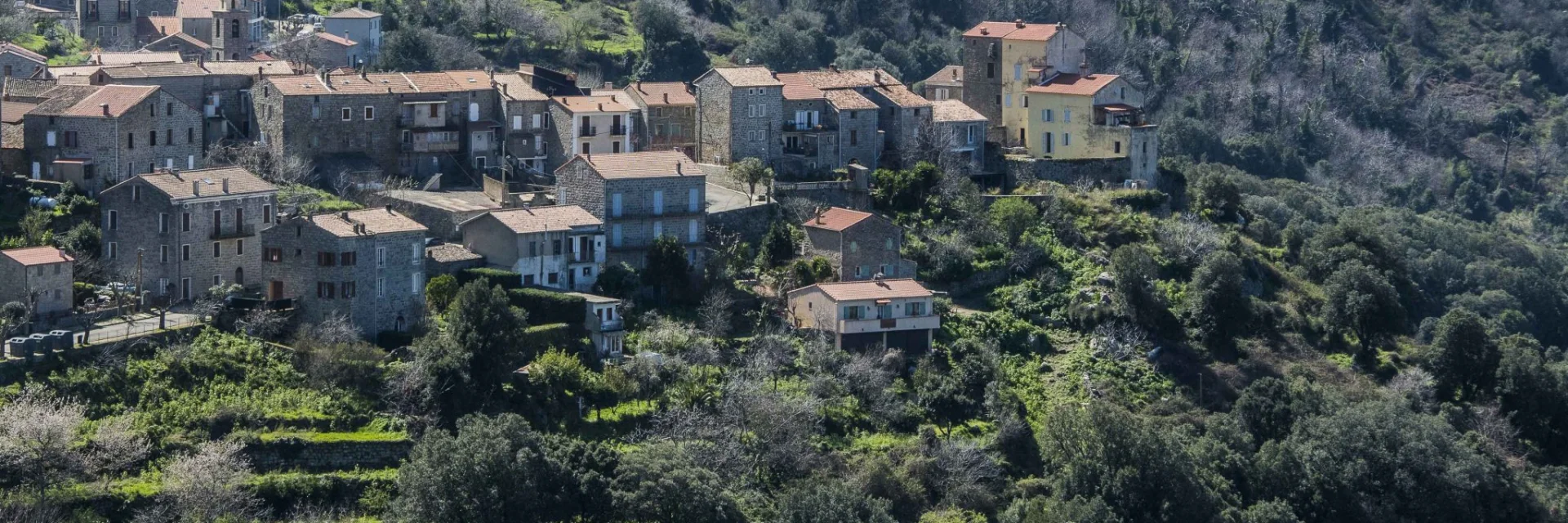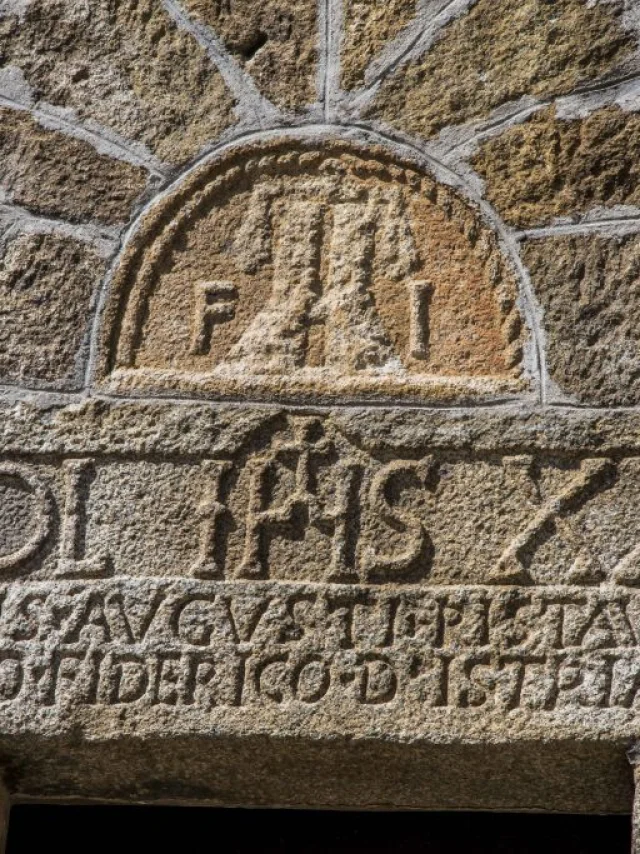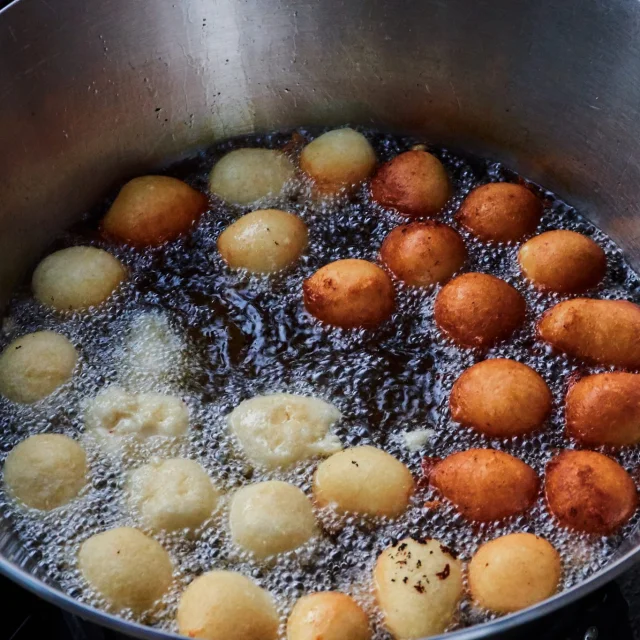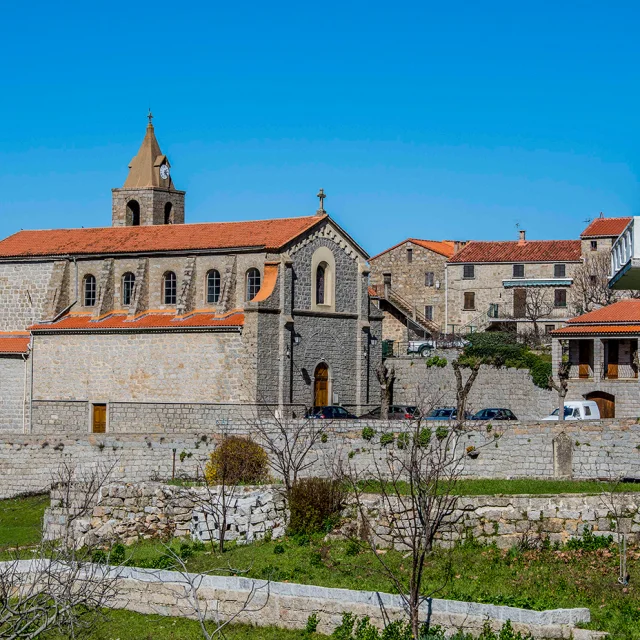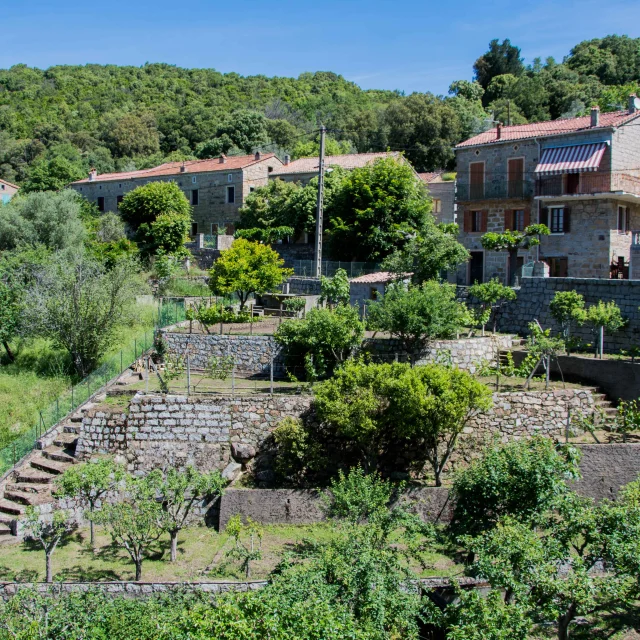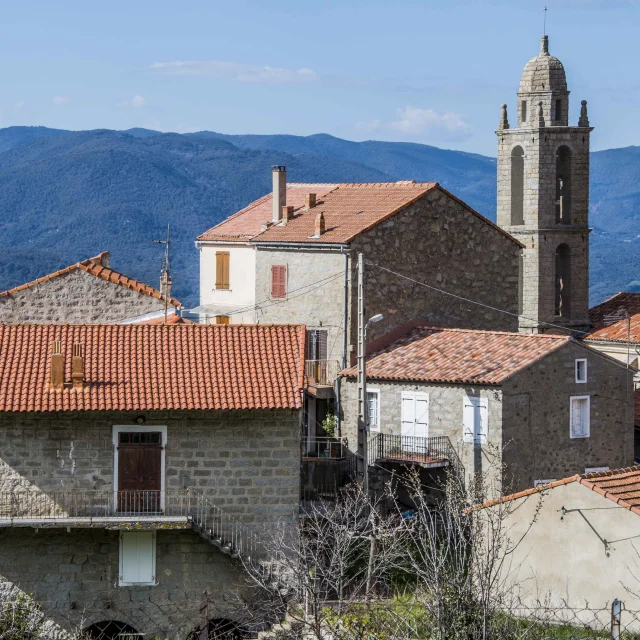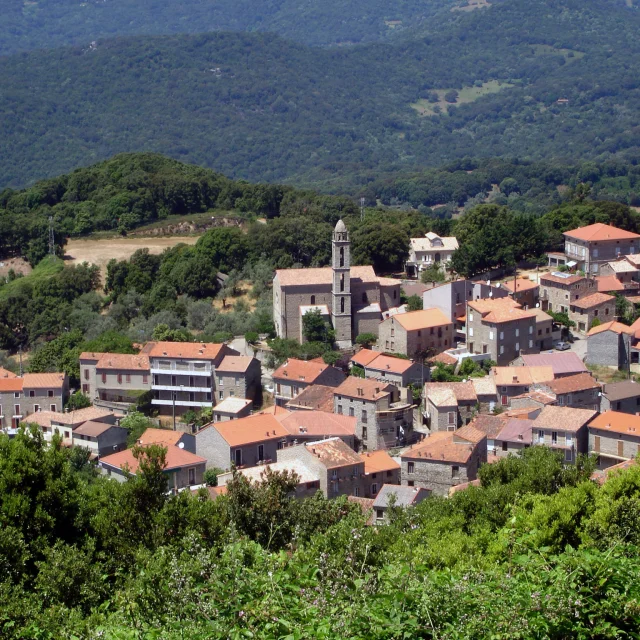Situated at an altitude of 450 m, Sollacaro overlooks the Taravo valley halfway between Petreto-Bicchisano and Porto Pollo. Developed from the 15th century onwards by the lords of Istria, the village features towers accompanied by a group of low-rise houses.
First of all, stroll along these typical lanes dotted with vaulted passageways and observe the beautiful old facades that give this town planning a distinct character. Then, in one of the streets of this old quarter, a residence will surely catch your eye: “U palazzu”. This massive three-storey palace dates in part from the 18th century, but its base is apparently older. But the village itself is well worth the diversions: its Baroque church, ancient fountains, sundial and the soul of its proud inhabitants make it a lively and welcoming place to visit.
And not to be missed: the church of Santa Maria Annunziata, with its fine stonework and curious columns set beneath a triangular pediment. The bell tower, also made of stone, is pyramid-shaped.
The church of Santa Maria Annunziata is also worth a visit.
